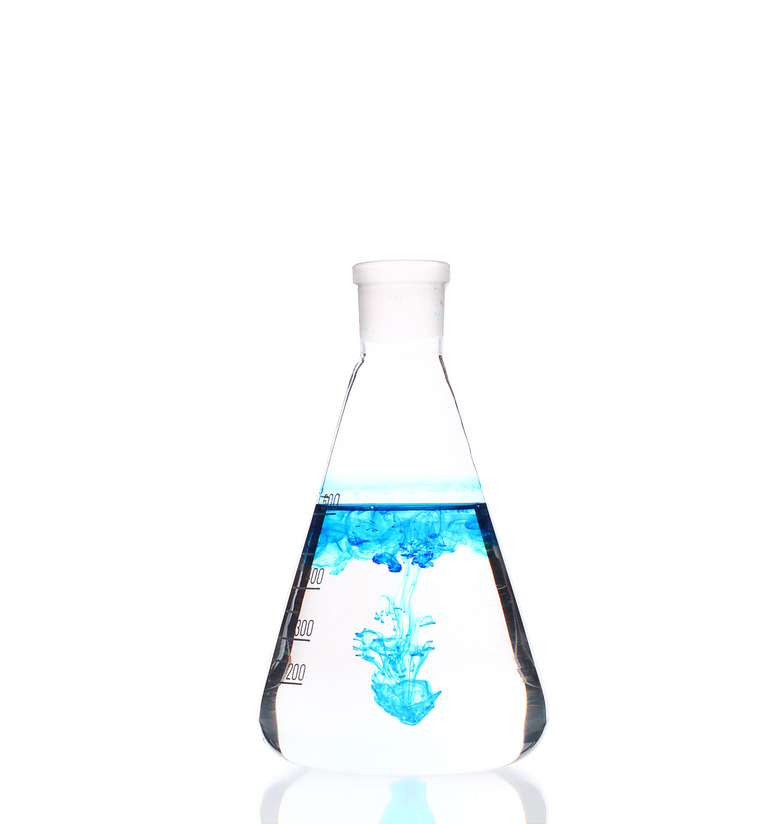How To Convert Millimoles To PPM
If you have a specified volume of solution of known molarity, you can quickly determine how many millimoles (mmol) of the substance in question exist in your sample. From there, you can translate millimoles to milligrams (mg), at which point you can easily calculate the concentration in parts per million, or PPM.
PPM Background
PPM Background
Molarity is measured in moles per liter (mol/L), whereas PPM is a measure of concentration (mass per unit volume) in which the denominator is, as the name of the unit implies, one million times that of the numerator. In standard units, then, 1 PPM translates to 1/1,000th of a gram divided into 1,000 milliliters, since 1,000 times 1,000 equals 1 million. Put more succinctly, because 1/1000th of a gram is 1 mg and 1,000 mL is 1 L, PPM has units of (mg/L).
Say you have 500 mL of a 0.1 M solution of potassium. To determine the PPM of this sample:
Step 1: Find the Molar Mass of the Substance
Step 1: Find the Molar Mass of the Substance
Look up potassium on a periodic table of the elements. The molar mass is 39.098 g. Because 1 mol of potassium is 39.1 g, by extension, 1 mmol = 39.098 mg.
Step 2: Determine the Number of Millimoles Present
Step 2: Determine the Number of Millimoles Present
500 mL is 0.5 L, and a 0.1 M solution of this volume therefore holds (0.5)(0.1) = 0.05 mol.
Because 1 mol = 1,000 mmol, 0.05 mol = 50 mmol.
Step 2: Find the Mass of the Substance Present
Step 2: Find the Mass of the Substance Present
From step 1, 1 mmol of potassium = 39.1 mg. Therefore, 50 mmol = (50)(39.098) = 1,955 mg.
Step 3: Convert to Parts Per Million
Step 3: Convert to Parts Per Million
As noted above, PPM = mg/L. Since we have 1,955 mg dissolved in 0.5 L, the PPM of potassium in this case is:
(1,955) ÷ (0.5) = 3,910 PPM.
Important Note
Important Note
PPM is usually reserved for instances in which even extremely dilute solutions contain a physically significant amount of something, as with poisonous substances.
Other measures of contaminants related to PPM include mass of contaminant per unit mass of whatever the contaminant is dissolved in (usually of soil) and volume fraction of the contaminant in air, which has volume units in both the numerator and the denominator. These are written PPMm and PPMv respectively.
Cite This Article
MLA
Beck, Kevin. "How To Convert Millimoles To PPM" sciencing.com, https://www.sciencing.com/convert-millimoles-ppm-8412601/. 4 June 2018.
APA
Beck, Kevin. (2018, June 4). How To Convert Millimoles To PPM. sciencing.com. Retrieved from https://www.sciencing.com/convert-millimoles-ppm-8412601/
Chicago
Beck, Kevin. How To Convert Millimoles To PPM last modified March 24, 2022. https://www.sciencing.com/convert-millimoles-ppm-8412601/
